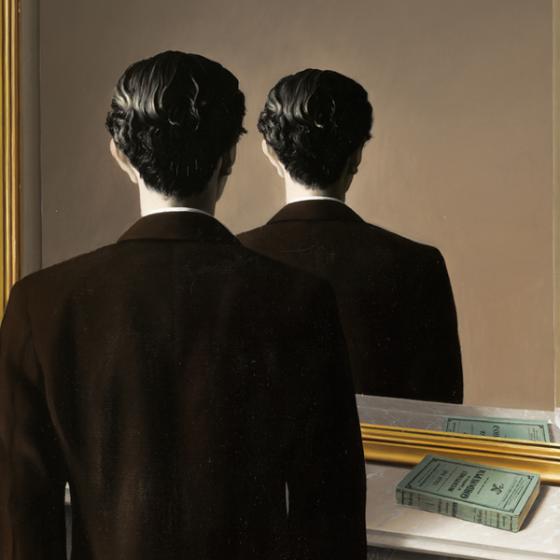
Recently I found some notes written back in 1975. I’d been asked for advice on how to practice zazen, based on my own experience. Reading them again, more than forty-five years later, there is little with which I would disagree.
*
When sitting, find a comfortable position for yourself, on a cushion, bench, stool or chair. Keep your back straight and your neck and head upright, in line with your spine. If your back is curved, you can encounter pain and damage your spine. If you are comfortable sitting in a full or half-lotus posture that is fine, if not, sitting on a bench or chair is also fine. The main requirement is to be stable, upright and ready to sit still for however long you plan to sit. The important thing is to be comfortable enough not to fidget or experience excessive pain, without being so comfortable you become sleepy or unable to concentrate.
Keep your eyes open. If you close your eyes you can drift into a dreamy, half-awake state. Buddhism is not called the path to awakening for nothing. Be aware, alert and clear-headed. Let any thoughts which arise come and go as they will. Don’t hang on to them or dwell on them. Treat emotions, itches and aches in a similar fashion. Just sit – neither shutting out thoughts nor encouraging them.
In zazen we are in touch with each passing moment, we are in the stream of existence – present, awake and alert. We are HERE, NOW – not trying to be somewhere else, or to be someone else.
Keep your vision relaxed. Let your sight settle on the ground in front of you. There’s no need to stare or go out of focus. Get used to the way the visual field constantly changes, even when we keep our head still. Colours and tones change, patterns endlessly form and re-form, things seem to move even though the carpet is just being itself. These perceptual changes are normal. Again, don’t dwell on these, sometimes surprising, experiences – just enjoy them and let them pass.
Don’t get wrapped up in the tricks and games your eyes, ears, mind and emotions play on you. Let them be. Don’t interfere. Remain tranquil and alert.
Breath from the deepest part of your diaphragm, not from your chest. Regular, even, breathing will happen of its own accord, if you let it. If our ‘centre’ could be pointed to, we’d point to our navel or belly – the centre of gravity, point of balance, source of strength and stability. Be aware of the inbreath and the outbreath – in and out – moment by moment.
If your mind becomes attached to something, or if it wanders, as soon as you are aware this is happening you will no longer be attached or wandering – you will be free of its magnetic power. Congratulate yourself and move on. Be mindful and watchful at all times.
When sitting, quality of experience is what matters, not quantity. Ten minutes of full attention and right effort, out-balance days of shallow attention and misguided effort. Sit for as long as you feel able to maintain concentration, and then for a few minutes more.
At home, in your daily life, set aside whatever time you can for zazen. Getting into a routine can be useful – whatever you can fit into your daily pattern. If it’s difficult to set aside time to sit on your own, or if you’re travelling or away from home, treat something you are doing as meditation. For instance: walking somewhere, washing dishes, sitting in an airport or railway station, cleaning your teeth in an hotel – some simple activity that you can attend to and work at in the same way as when you’re in sitting meditation. There is no excuse for not meditating, other than you don’t want to do it – which is fine. But if you do, there is always time and space to sit. As an old Zen saying goes: ‘Every man has beneath his feet, ground enough to do zazen on.’
Remember, you’re not trying to pass an endurance test. You’re not fighting a battle with your body or your ‘self’. You’re not in a waiting room hoping for something to happen. Nor are you on a Mediterranean beach, escaping from something. If you find yourself struggling with another part of yourself, relax, let go, and come back to your breathing, come back to where you are.
When we sit in zazen we observe and feel the texture of our experience without passing judgement, chattering about it in our head or adding to it in any way. We let it be – experiencing pure and clean. No extras. No muddiness. No distortion. What can muddy or distort, is our busy, chattering ego – making so much noise and commotion, that we can’t hear what’s actually going on, or feel anything that isn’t being distorted by ego interference – ego-radio-static.
The process of sitting in meditation has been compared to looking at a reflection of the moon in a pool of water. If we move about in the water, or throw something into the pool, we cause ripples and disturb the surface. So long as the surface is disturbed we can’t see the features of the moon with any clarity. When we sit still and let it be, we can see the moon clear and bright.
As to what will happen if we practice zazen? What will be achieved? How will I benefit? It is best to sit first – with an open mind. Enjoy, quietly and calmly, your own ever-changing nature. Let the questions come, if they come, from your own experience. The answers, if there are any, may well come from the same place.
